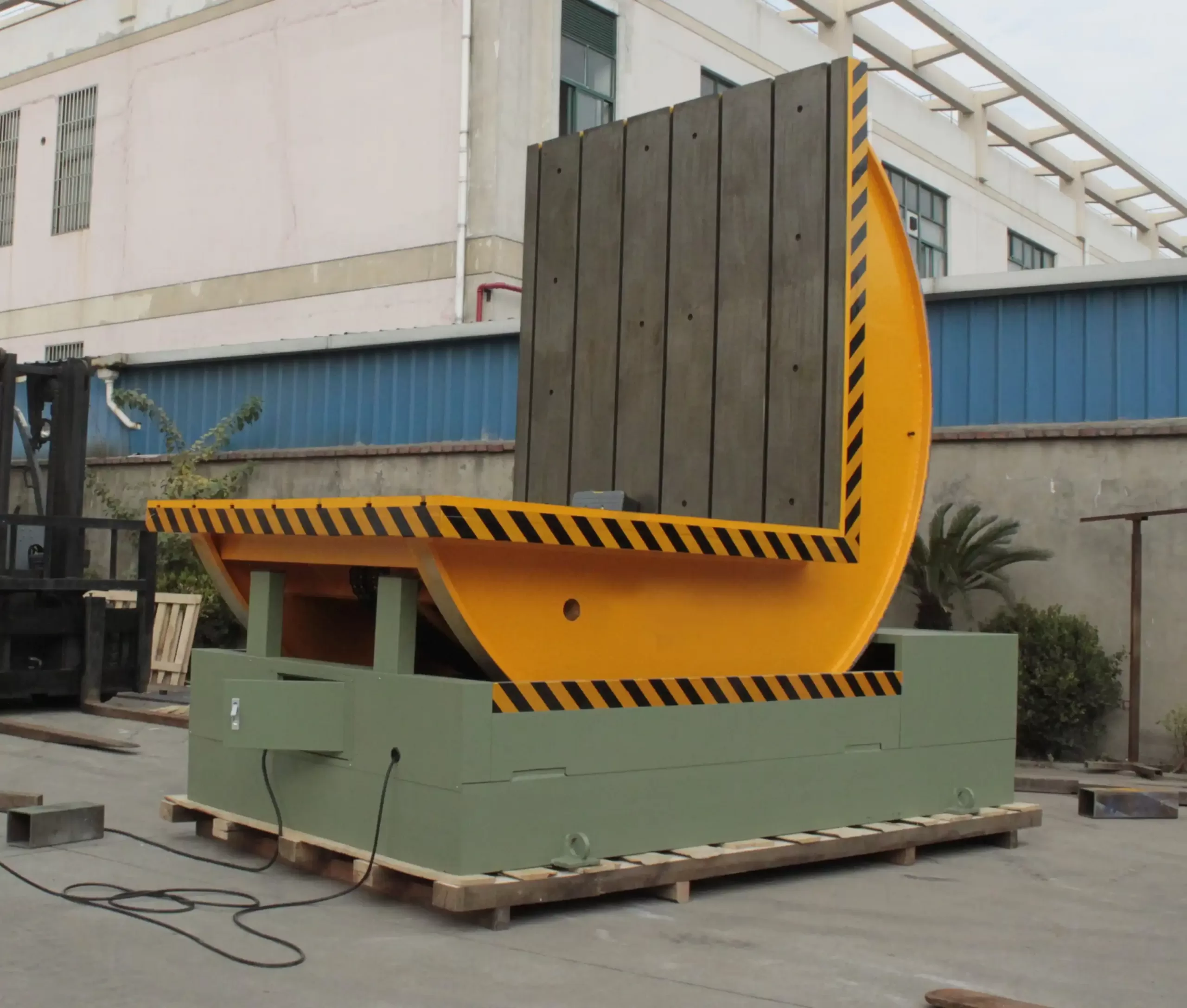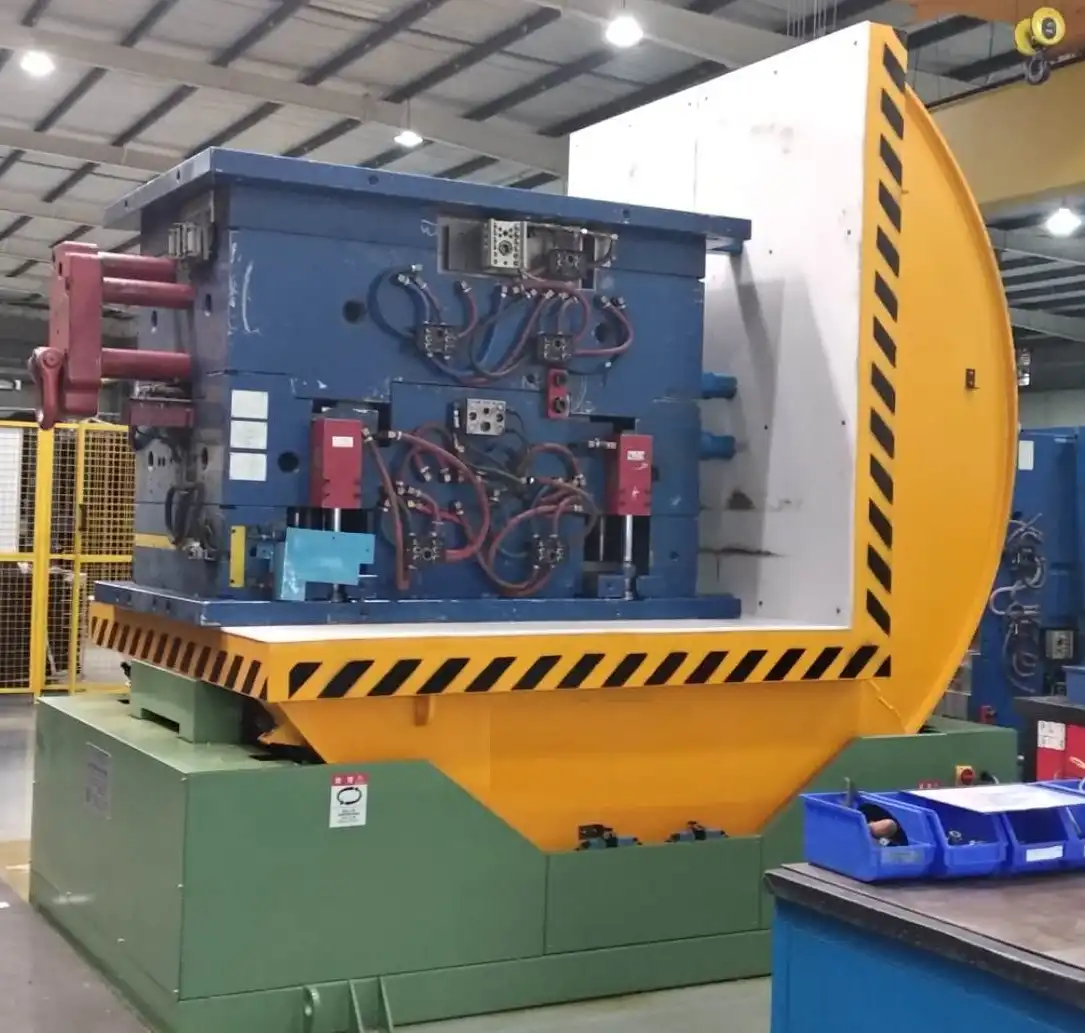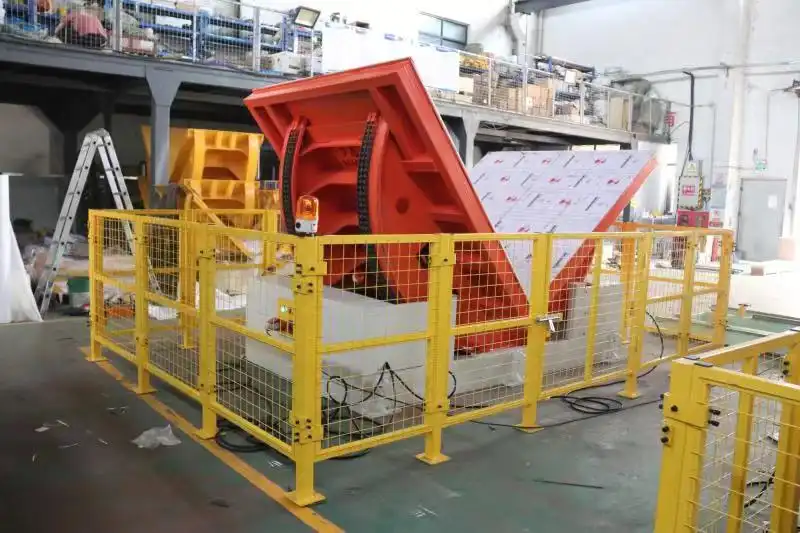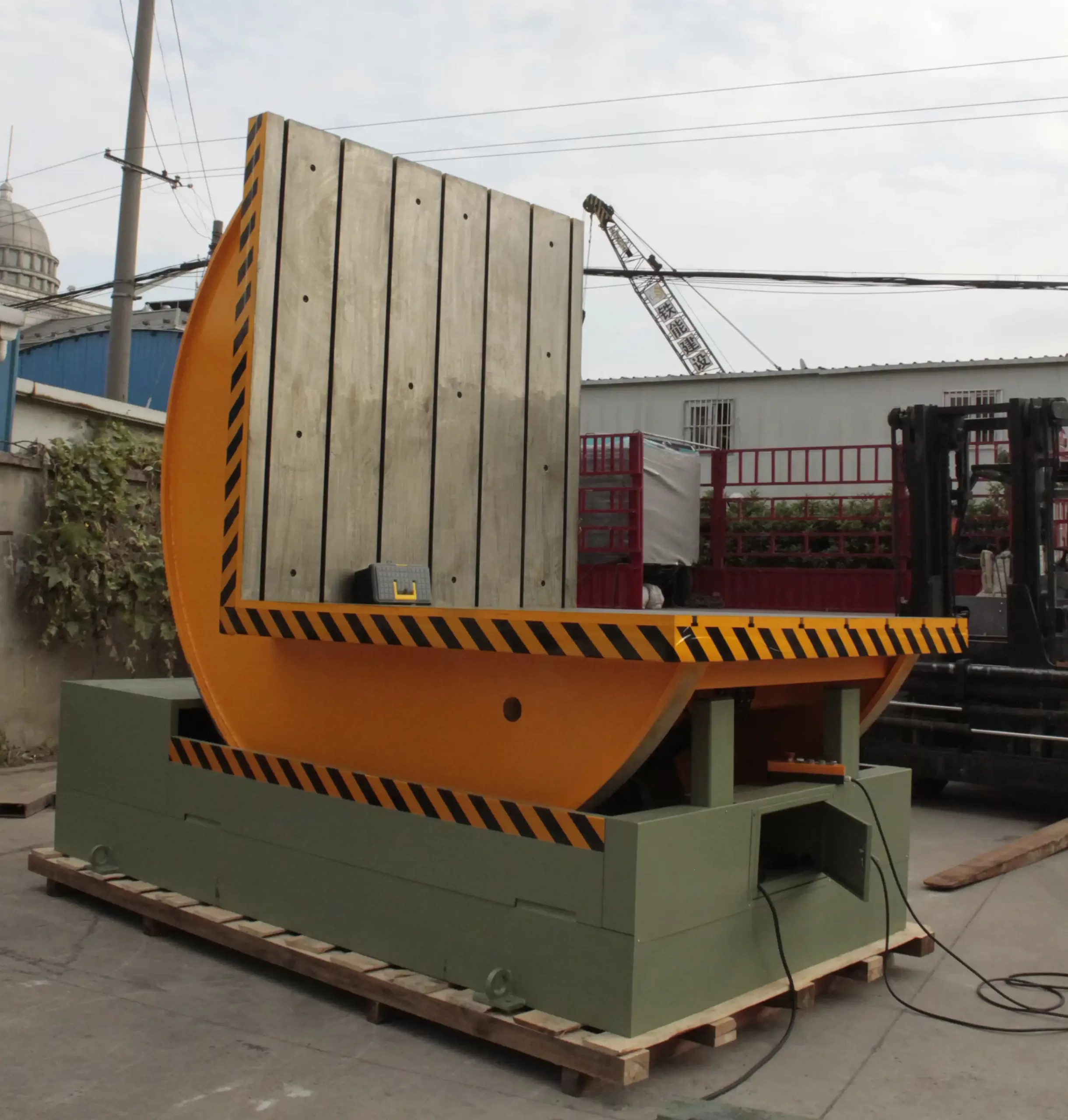In my years in the steel industry, I've seen how a single weak link can bring a whole operation to a halt. You might have the best furnace and the most advanced caster, but if your mold handling process is slow or unsafe, you're leaving money on the table. In Mexico's demanding steel market, this isn't just an inefficiency; it's a critical vulnerability. You worry about the risk of a heavy mold slipping from an old crane, damaging equipment, or worse, injuring one of your trusted team members. Each near-miss is a reminder of this constant pressure. But what if you could transform this high-risk, labor-intensive step into a smooth, automated, and safe part of your production line? It's not just a dream; it's a strategic upgrade that leading mills are making to stay competitive.
For many steel mills in Mexico, the answer is a clear no. Traditional mold handling processes, which often depend on aging cranes, manual rigging, and significant human intervention, do not meet the stringent safety and efficiency standards required today. This creates unacceptable risks to personnel, expensive equipment, and overall production continuity, directly impacting a plant's ability to meet modern output demands.

I understand that as a steel mill owner, every investment decision must be weighed carefully. You're looking at ROI, stability, and long-term value. It's easy to see the immediate cost of new equipment. But it's harder to quantify the daily costs of an outdated system. These hidden costs—in downtime, in risk, in lost efficiency—add up. Let's dig deeper into these issues. We will look at how old methods create risk, calculate the true cost of an accident, and explore how modern solutions deliver a powerful return on investment by improving both safety and productivity. This isn't just about buying a machine; it's about building a more resilient and profitable operation.
How Do Outdated Mold Handling Methods Increase Operational Risks?
You see it every day in the plant. An operator carefully guides a massive mold with a pendant control, while another team member uses pry bars to position it. It’s a process that has worked for years, but it feels like you're one slip-up away from disaster. This feeling of constant risk is a heavy burden. You worry about the aging crane that groans under the load, or the momentary lapse in concentration from a tired worker at the end of a long shift. You know that these outdated methods are not just slow; they are fundamentally unpredictable. The solution is to identify and understand these specific failure points, so you can build a solid case for a necessary upgrade that protects your people and your production.
Outdated mold handling methods increase operational risks primarily through their heavy reliance on manual intervention and aging, imprecise equipment. This combination directly leads to a higher probability of human error, unexpected equipment failures, and critical production delays, creating a consistently hazardous and inefficient environment.

To truly grasp the danger, we need to break down the risks into distinct categories. It’s not one single thing but a combination of factors that creates a high-risk situation in many Mexican steel mills today. From my experience building and running a factory, I learned that problems you don't measure are problems you can't solve. So let's measure the risks.
The Human Factor: The Unpredictable Element
The biggest variable in any manual process is the human element. Your team is skilled and experienced, but they are still human. They get tired, they can be distracted, and the communication between a crane operator and a ground crew can be misunderstood, especially in a noisy mill environment.
- Operator Fatigue: A 12-hour shift takes a toll. Physical and mental fatigue can slow reaction times and impair judgment, turning a routine mold movement into a high-stakes gamble.
- Skill Gaps: Newer employees may not have the years of experience needed to anticipate problems. Inconsistent training can lead to different crews using slightly different, and sometimes unsafe, procedures.
- Communication Breakdowns: Hand signals and shouted instructions in a loud factory are recipes for misinterpretation. A misunderstood signal can lead to a mold being lowered too quickly or in the wrong position.
The Equipment Factor: When Old Machines Fail
Javier, you mentioned that many of your key production lines have equipment that is over 15 years old. This is a common challenge, but it's especially dangerous when it involves lifting and moving multi-ton molds. Aging equipment introduces a level of unreliability that directly threatens both safety and your goal of 95% uptime.
- Mechanical Wear and Tear: Older cranes and hoists suffer from metal fatigue, worn-out brakes, and stretched cables. These components can fail without warning. A sudden failure during a lift is a catastrophic event.
- Lack of Precision: Old pendant controls lack the fine motor control of modern systems. This results in jerky, imprecise movements, increasing the chance of bumping the mold against other equipment or structures, causing damage.
- No Failsafes: Modern systems are built with multiple redundant safety features—overload sensors, automatic braking, anti-collision systems. Many older cranes lack these critical protections, meaning a single point of failure can lead to an accident.
The Process Factor: Built-in Bottlenecks
Finally, the process itself is often a source of risk. Manual mold handling is inherently slow and requires a large, clear area, creating a bottleneck in your production flow. This pressure to speed up can lead teams to cut corners on safety procedures.
| Aspect | Outdated Manual Process | Modern Automated Process |
|---|---|---|
| Human Involvement | High: Crane operator, riggers, spotters. | Low: Supervisor role, remote operation. |
| Risk of Error | High: Dependent on skill, communication, and alertness. | Low: Programmed, repeatable movements. |
| Changeover Time | Long and variable (30-60+ minutes). | Short and consistent (10-15 minutes). |
| Safety Features | Minimal: Relies on operator skill and basic limits. | Extensive: Sensors, interlocks, anti-collision. |
Each of these factors—human, equipment, and process—compounds the others. An old crane operated by a tired worker following an inefficient process is not just a risk. It's an accident waiting to happen. Addressing this is the first step toward building a safer and more productive steel mill.
What is the True Cost of an Unsafe Mold Handling Process in a Mexican Steel Mill?
You might budget for occasional equipment repairs or think of safety incidents in terms of direct medical costs. But this view is dangerously incomplete. The real problem is that these visible costs are just the tip of the iceberg. An accident on the casting floor sends ripples through your entire operation. Production stops, orders get delayed, and your team's morale takes a hit. You're trying to lower operating costs by 8%, but a single serious incident can wipe out those savings in an instant. The solution lies in a clear-eyed analysis of all costs, both direct and hidden, to understand the massive financial impact of an unsafe process and the compelling ROI of investing in a safer alternative.
The true cost of an unsafe mold handling process in a Mexican steel mill goes far beyond the immediate expenses of repairs and medical treatment. It encompasses enormous indirect costs, including lost production revenue during downtime, decreased product quality, soaring insurance premiums, and potential regulatory fines, all of which severely damage the bottom line and competitiveness.

When I was running my factory, a major equipment failure taught me a hard lesson about cost. The price of the replacement part was nothing compared to the cost of the two weeks of production I lost. That experience forced me to see the business differently. I started looking at risk not as a line item, but as a direct threat to profitability. Let's apply that thinking here and break down the costs for a steel mill in Mexico.
The Obvious Costs: Direct Financial Hits
These are the costs that show up clearly on a balance sheet after an incident. They are significant, but as we'll see, they are often the smallest part of the total damage.
| Direct Cost Category | Description & Examples | Potential Financial Impact (USD) |
|---|---|---|
| Equipment Repair/Replacement | Cost to repair a damaged crane, replace a cracked mold, or fix collateral damage to the caster. | $50,000 - $500,000+ |
| Medical & Compensation | Emergency medical care, long-term rehabilitation costs, and worker's compensation claims. | $10,000 - $1,000,000+ per incident |
| Regulatory Fines | Penalties from Mexican safety agencies (STPS) for non-compliance with safety regulations. | $25,000 - $250,000+ |
| Legal Fees | Costs associated with legal defense, settlements, and managing litigation. | $20,000 - $200,000+ |
The Hidden Killers: Indirect Costs That Cripple Profitability
These are the costs that do the most long-term damage. They are harder to calculate but have a far greater impact on your goal to increase margins and improve plant utilization.
Production Downtime
This is the single biggest financial hit. Your mill is designed to run 24/7. Every hour the caster is down is an hour you are not producing steel and not generating revenue. Let's imagine your plant has a capacity of 2 million tons per year.
- Tons per hour:
2,000,000 tons / 8,760 hours = ~228 tons/hour - Revenue per ton (conservative):
$600 USD - Lost Revenue per Hour of Downtime:
228 tons * $600 = ~$136,800 USD
A safety incident that stops production for even a single 8-hour shift could cost you over $1 million in lost revenue alone. This directly attacks your goal of 95% uptime.
Market and Reputation Damage
In a fluctuating market, reliability is your currency.
- Delayed Orders: An unexpected shutdown can cause you to miss delivery deadlines for key customers in the automotive or construction sectors. This damages trust and can lead to lost contracts.
- Reputational Harm: A serious safety incident can damage your reputation as a reliable supplier and a responsible employer, making it harder to attract top talent and secure new business.
Operational and Human Costs
- Insurance Hikes: Your insurance provider will see a serious incident as a sign of high risk. You can expect your premiums to increase significantly at the next renewal.
- Lowered Morale: An unsafe workplace creates stress and anxiety. It hurts morale, reduces productivity, and increases employee turnover, forcing you to spend more on hiring and training.
Calculating these true costs shows that maintaining an outdated, unsafe mold handling process is not a cost-saving measure. It's an enormous, unmanaged financial risk. Investing in a safe, automated system isn't an expense; it's insurance against these catastrophic costs.
How Can Automated Systems Improve Both Safety and Efficiency in Mold Handling?
You know you have a problem with your current process. The risks are clear and the potential costs are huge. But making a major capital investment feels like a big step, especially with market uncertainty. You might wonder if the benefits of automation are worth the cost and complexity. You see your competitors in Mexico and abroad upgrading their facilities, and you worry about falling behind. The answer is that a modern automated system isn't just a purchase; it's a solution that directly targets your primary goals of enhanced safety and higher productivity, delivering two powerful benefits from a single strategic investment.
Automated mold handling systems drastically improve both safety and efficiency by replacing high-risk manual tasks with precise, programmable, and repeatable machine actions. This minimizes human error, eliminates dangerous pinch points, and integrates seamlessly into the production schedule, resulting in faster mold changeovers, reduced downtime, and a fundamentally safer work environment.

Let's move beyond the abstract and look at the specific technologies that make this transformation possible. As an engineer, I love seeing how smart design can solve complex problems. These systems are not just about raw power; they are about intelligent control. They are designed to work as a reliable, integrated part of your production line, helping you achieve that 95% uptime target.
Key Technologies in Automated Mold Handling
The core idea is to take the operator out of the danger zone and replace unpredictable manual actions with predictable machine precision. This is achieved through several key pieces of equipment working together.
Mold Tippers / Upenders
A mold tipper is a simple but incredibly effective machine. Its sole purpose is to safely rotate a mold from a horizontal to a vertical orientation, or vice versa.
- Before Automation: This is often done with a crane and slings, a highly unstable and dangerous maneuver where the mold's center of gravity shifts unpredictably. A small miscalculation can cause the mold to swing or drop.
- With Automation: The mold is placed on the tipper's platform. The machine then uses smooth, hydraulic or electro-mechanical power to rotate the mold in a controlled, predictable arc. The operator is standing at a safe distance, using a simple push-button control. This single machine eliminates one of the most hazardous parts of the entire process.
Automated Transfer Carts
Once the mold is in the correct orientation, it needs to be moved from the maintenance area to the caster.
- Before Automation: This task is typically handled by an overhead crane traveling the length of the bay. This ties up the main crane, creating a bottleneck for other tasks. It also requires a clear path and puts people on the floor at risk.
- With Automation: An automated transfer cart, running on rails or using guidance sensors, takes over. These carts are low-profile, battery-powered, and can be programmed for precise routes. They can be equipped with laser scanners to detect obstacles and stop automatically, making the movement far safer than a crane. They operate independently, freeing up your overhead crane for other critical lifts.
The Power of Integration: Connecting to Your Digital Goals
Javier, your goal to deploy MES, IoT sensors, and data analytics is what separates a good plant from a great one. This is where a modern mold handling system truly shines. It's not just a collection of machines; it's a data-rich subsystem ready to plug into your digital transformation strategy.
- IoT Sensors: The tippers and carts are equipped with sensors that monitor motor current, vibration, temperature, and position. This data can be fed into a predictive maintenance platform, alerting your team to a potential failure before it happens. This is a direct path to increasing equipment uptime.
- MES Integration: The automated system can be linked directly to your Manufacturing Execution System (MES). The MES can automatically dispatch a mold from the repair bay to the caster just in time for a scheduled changeover. This tightens your production schedule, minimizes wait times, and helps you optimize your entire workflow.
| Metric | Manual Process | Automated System | Impact on Goals |
|---|---|---|---|
| Mold Changeover Time | 45-60 min | 10-15 min | Increases产能利用率 (Capacity Utilization) |
| Labor Required | 2-3 people in danger zone | 1 supervisor | Reduces labor cost, improves safety |
| Safety Incidents | High potential | Near-zero potential | Lowers insurance/compensation costs |
| Data for MES/PM | None | Rich, real-time data | Enables数字化转型 (Digital Transformation) |
By adopting these systems, you are not just making your plant safer. You are making it smarter, faster, and more efficient. It is a direct investment in your core goals of higher utilization, lower costs, and a fully digitized, data-driven operation.
Beyond the Machine: Why a Strategic Partnership is Crucial for Modernizing Your Handling Process?
You've seen the technology and you understand the ROI. The decision to buy an automated system seems logical. But here is a critical truth I've learned: buying the machine is the easy part. The real challenge is integrating it flawlessly into your unique factory environment to deliver the results you expect. A supplier who just ships a machine and a manual leaves you with all the risk. A bad installation or nonexistent support can turn a promising investment into a months-long operational nightmare, undermining the very goals you're trying to achieve. You don't just need a vendor; you need a strategic partner who has been in your shoes and is committed to your success from start to finish.
A strategic partnership is crucial for modernization because installing advanced equipment is not a simple transaction. It requires a partner's deep expertise in your specific operational flow, seamless integration with existing systems, and dedicated long-term support for training, maintenance, and future optimization to guarantee the investment's success and sustainability.

This is personal for me. When I started my journey, moving from an engineer to founding my own factory, I made mistakes. I bought machines from suppliers who offered the lowest price. They delivered the equipment, but when we faced challenges during installation and ramp-up, they were nowhere to be found. I had to solve complex integration problems on my own. It cost me time, money, and a lot of sleepless nights. That experience was painful, but it taught me the most valuable lesson in this business: the relationship with your equipment provider is as important as the equipment itself.
That is why I built SHJLPACK on a different principle. Our mission is to be more than a supplier. We are a knowledge-sharing platform and a true partner. We succeed only when you succeed. For a leader like you, Javier, who is looking for more than just a machine, this is what a true partnership should look like.
A Partnership Built on an Engineer's Understanding
We don't start by showing you a catalog. We start by listening.
- Phase 1: Deep Dive Consultation: We come to your mill in Mexico. We walk the floor with you and your team. We study your current workflow, identify the exact bottlenecks, and understand your specific goals for safety, uptime, and cost reduction. We analyze your plant layout, your existing equipment, and your plans for digital integration.
- Phase 2: Collaborative Design: Based on this deep dive, we don't just offer a standard product. We design a solution. This might involve a custom-sized transfer cart to fit a narrow bay or a specialized tipper interface to match your unique mold design. We work with your engineers to ensure the solution fits perfectly within your operational reality. This is the difference between buying a tool and commissioning a custom-built system.
Execution That Ensures Success
A great plan is worthless without great execution. Our commitment doesn't end when the equipment is shipped.
- On-Site Installation and Commissioning: Our own experienced engineers—not third-party contractors—oversee the installation. We handle the mechanical and electrical integration and ensure the system communicates perfectly with your other platforms, like your MES. We don't leave until the system is running smoothly and meeting the performance targets we agreed upon.
- Comprehensive Training: We train your operators and maintenance staff not just on how to use the equipment, but on how to maximize its potential. We ensure they are confident, competent, and safe.
- Long-Term Support and Optimization: We are your partner for the life of the equipment. We provide ongoing maintenance support, ensure the availability of spare parts, and act as your expert resource as you continue your digital transformation. When you are ready to add more sensors or explore new analytics, we are there to help you do it.
This is what it means to be a "Total Solution for Wrapping Machine" provider. It's not about the hardware; it's about the total outcome. For a forward-thinking leader in Mexico's steel industry, choosing a partner who understands your challenges and is invested in your long-term vision is the most important decision you can make.
Conclusion
Upgrading your mold handling is more than a safety fix. It is a strategic investment in productivity, efficiency, and the future of your mill. We are here to be your partner in that process.





